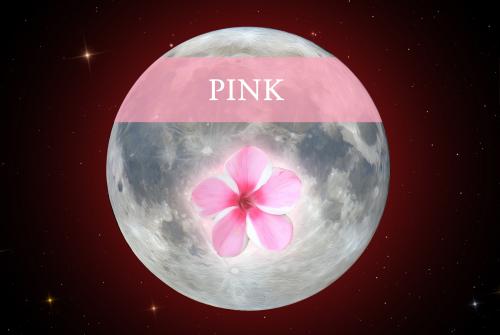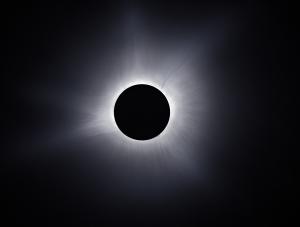Celebration of Space - April 19, 2024
This coming Tuesday, April 23, 2024, at 9:56 am ET, the Moon will orbit into alignment on the opposite side of Earth than the Sun. This is the full Moon, and brings with it the brightest nighttime period of the 29.5 day lunar synodic period. Now that we are a month past the Vernal Equinox, the Moon is rising lower in the sky, which will make the Moon eventually appear more yellow than it is during the winter time months. Even though we aren’t at that point yet, you should notice that the Moon is much lower in the sky than it was in December.
Like all things natural, humanity loves to name things, and the Moon is certainly no exception. The April Moon carries the common name, the Full Pink Moon. According to the Old Farmer’s Almanac, the Pink Moon gets its name from a pink moss that blooms in April, called Creeping Phlox, also known as Moss Pink, which is native to eastern North America. Other names the April Moon go by are, the Breaking Ice Moon, the Moon When the Ducks Come Back, the Frog Moon, and the Sucker Moon (as in fish, not people). Regardless of what you call the April full Moon, be sure to step outside on Tuesday night at sunset to catch a view of the Pink Moon rising over the ESE horizon. Then perhaps stop in somewhere for a tasty pink dessert.
Monday, April 22, 2024 is Earth Day, a day to celebrate the fabulous planet that we are part of. That makes this weekend the time that most events and celebrations will likely occur. One such event will be coming to Ninigret Park, home to the Frosty Drew Observatory and Science Center. Tomorrow morning, starting at 10:00 am, there will be music, food, information tables from different organizations and businesses in town, and of course, Frosty Drew set up in Ninigret Park. We had planned to have our solar telescopes set up on the Sun, and perhaps have daytime views of Saturn in the large Observatory telescope, but the weather is just not cooperating. So we will have some astronomers on site to talk about our operations, and give tours of the Observatory and Science Center. Stop in between 10:30 am and 2:00 pm to learn a bit about Frosty Drew and our plans for the 2024 on-season.
On Earth Day itself, NASA is hosting their annual Global Selfie event. Go to your favorite place or just your yard and take a selfie of yourself with your location in view. Post your selfie online and tag the post with the #GlobalSelfie hashtag. NASA is preferring selfies captured with a body of water in the pic. Learn more about NASA’s Earth Day campaign.
Overnight on Sunday – Monday, April 21-22, 2024, the annual Lyrid Meteor Shower will peak. This is the first meteor shower of the viewing season, and brings an end to the 3.5 month lull in meteor shower activity. Typically the Lyrids will bring an increase of about 20 meteors per hour to the sky, but in 2024, the Moon will be one day away from the full phase, which will outshine nearly all Lyrid meteors aside from the brightest ones. Regardless, the lull is over, so get your eyes back on the sky because meteor activity is on the up.
Be sure to regularly check our 2024 Total Solar Eclipse gallery on our website for new images of the fabulous eclipse from locations across the United States. The Frosty Drew Astronomy Team was stationed from Texas through Vermont along the path of totality. We have hundreds of gigabytes of data that we are digging through and processing. This gallery is our drop for images that are ready for release. So take a moment and stop in for a view.
- Author:
- Scott MacNeill
- Entry Date:
- Apr 19, 2024
- Published Under:
- Scott MacNeill's Columns




